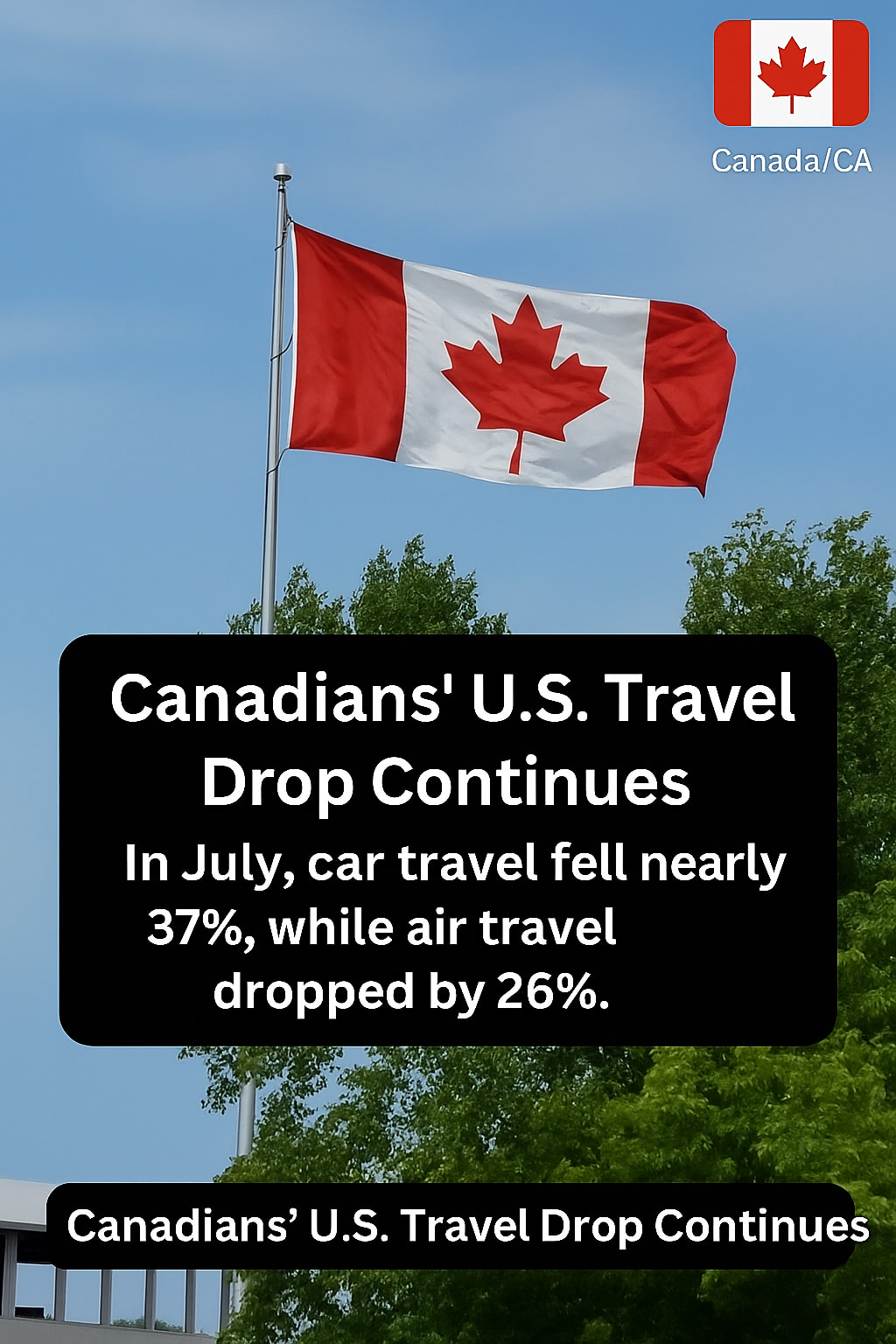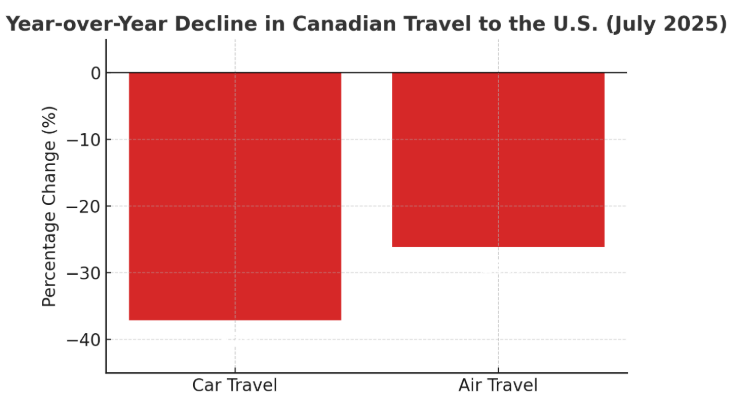Physical Address
304 North Cardinal St.
Dorchester Center, MA 02124
Physical Address
304 North Cardinal St.
Dorchester Center, MA 02124

Canada – August 2025 – The steady decline in Canadian travel to the United States shows no signs of reversing, according to the latest cross-border travel data. In July, car travel by Canadians to the U.S. plummeted by nearly 37%, while air travel fell by 26% compared to the same month last year. This marks yet another month in a downward trend that has stretched across most of 2025.

The significant drop in car crossings is being driven by multiple factors, including longer wait times at the border, fluctuating exchange rates, and increased travel costs. Many Canadians are finding it more affordable and convenient to explore destinations within Canada or to travel internationally to countries other than the United States.
Tourism analysts point out that fuel prices and accommodation costs in the U.S. have risen sharply, making road trips less appealing. This is particularly noticeable among travelers from Ontario and British Columbia, who have traditionally made frequent weekend or holiday trips across the border.
The decline is not limited to road travel. Air travel to the United States also saw a substantial dip in July, with passenger numbers falling by over a quarter year-on-year. Experts attribute this to higher airfare, tighter security protocols, and changing vacation habits.
With airlines facing increased operating costs, ticket prices for popular routes such as Toronto–New York or Vancouver–Los Angeles have risen considerably. Many travelers are opting to spend their money on destinations in Europe, Mexico, or within Canada itself, where they feel they can get more value for their travel budgets.
The continued drop in Canadian visitors is being felt most acutely in U.S. border states and popular tourist areas. Local economies that depend heavily on Canadian tourism — from hotels and restaurants to retail outlets and entertainment venues — are experiencing reduced revenues.
Popular shopping destinations, such as outlet malls in New York State and Washington, have reported lighter foot traffic from Canadian shoppers. Meanwhile, Canadian cities like Montreal, Vancouver, and Calgary are seeing a modest boost from residents spending their vacation money domestically.
Travel experts cite several reasons behind this sustained decline: